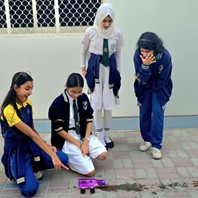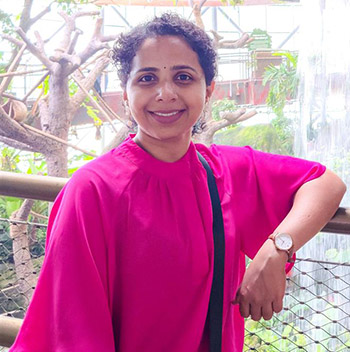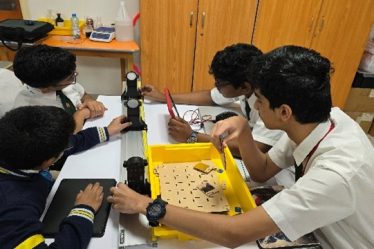

“We came to bake cookies; they showed us how chemistry can drive a race – right from the oven to the F1 track!”
Who knew baking could bubble with chemistry? In “Cookie Chemistry,” our young scientists turned the STEM lab into the tastiest kitchen ever! Mixing butter, sugar, and flour became an experiment in physical change—as dough transformed in color, texture, and aroma while baking.
But the real excitement began when the “now” kitchen turned into a mini lab! Students combined sodium bicarbonate and acetic acid to study a chemical reaction, capturing every burst of carbon dioxide gas with SPARKvue sensors. Molecular models and graphs brought chemistry to life – bubbling, reacting, and evolving before their eyes.
To push their curiosity further, we introduced something new – a challenge to design a chemical car, a small vehicle powered by the same fizzy CO₂ reaction! The moment we brought this twist into the lab, the excitement level shot up. Students were eager to connect what they had just seen in their cookie experiments to a real-life application, discovering how the CO₂ that made cookies rise could also propel race cars – just like the F1 in Schools racers they admire. Suddenly, chemistry wasn’t just about reactions – it was about motion, innovation, and real-world science in action.

The difference was striking! Before introducing the chemical car challenge, only 38% of students demonstrated strong conceptual clarity and real-world understanding of how gases can generate force or motion. After the challenge, this number surged to 89%, and engagement levels – measured through participation and idea-sharing – rose from 46% to 94%. The excitement of designing something tangible from a simple reaction transformed their learning into an experience filled with curiosity, creativity, and discovery.
From cookies to chemical clues and racing inspiration, students didn’t just learn – they tasted, tested, and tracked it all!

– Veena Mohana


